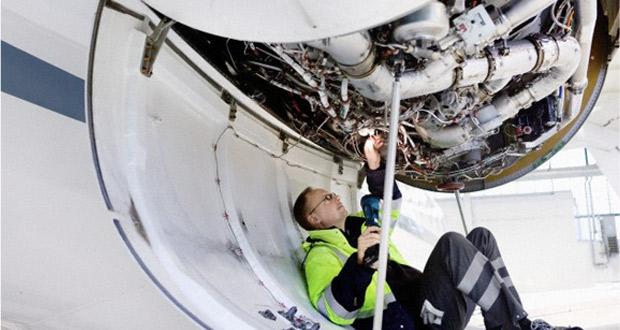More Changes Coming In Part Markets | 部品マーケットにさらなる変化が訪れる

航空機アフターマーケットは、コロナ危機がもたらした長い調整期間の最初のフェイズに入ったにすぎない。健全化に向けた長い道のりの中で、おそらく来年には不振だった部品販売の回復が見られるだろう。
中古部品の大量流通は、メーカー製およびPMA部品の両方に大きな影響を与えることになる。業界内の統廃合が進み、アフターマーケットに対するメーカーの考え方も変化することが予想される。
これらのトレンドは、MARPA(Modification and Replacement Parts Association)の年次総会における特別委員会で、アフターマーケット業界の幹部や航空アナリストによって議論されたものだ。
GA Telesis社の常連顧客である航空会社4社は、コロナ危機以前の約半分しか支出していないと指摘したのは、GA社のフライトソリューショングループ担当社長・ Jason Reed氏だ。
そして、その支出の80%がメンテナンスで、パーツ購入はわずか20%となっており、通常時の比率とは逆転している。「航空会社はなるべく先延ばしにしようとしている」とReed氏は強調する。
同氏によれば、航空会社は保有機のうち50~60%しか稼働させておらず、稼働機に整備を必要とする問題が生じた際は予備機と入れ替えているとし、「大多数の航空会社は全てを先延ばしにしている」と繰り返した。
良いニュース(とGA社幹部は信じている)は「反発の波が来ている」ことで、延期されたMROやパーツ購入もいつかは実施しなくてはならない。Reed氏は、その反発が2021年第2四半期に訪れると考えている。
ひとつの例外は、エンジンの重整備だろう。6,000基近いエンジンが解体されようとしている今、ほとんどの航空会社はエンジンのショップ整備は考えていない。これらエンジンおよび機体の解体は、PMA部品購入に対しては逆風となるだろう。
それでも、パーツ購入をめぐる経済は新時代を迎えるかもしれない。Reed氏によると、中東の複数の航空会社が大量の機材を購入したことで、特別サービスとしてメーカーから無料でパーツ提供を受けているという。
しかし、今や彼らもそれ以上の機材を受領していないために特別サービスも使い切っており、これらの航空会社もコスト節約のため、中古部品やPMA部品に目を向けることになるだろう。PMA部品にとっての課題は、解体機から生まれる大量の中古部品だ。
一方、PMA部品が引き続き注目される分野のひとつは、キャビン内装だ。PMA部品の需要は、メーカーが適切なタイミングで部品供給できるかどうかにかかっている。
またReed氏は、アフターマーケットにおいて大規模な統廃合が起きると予想している。ティア1~4に分けられるサプライヤーのうち、彼はティア2とティア3は統合されると考えている。そして、「嵐に耐えきれない」小規模な会社は買収されるだろう。
Canaccord Genuity社のマネージングディレクター・Ken Herbert氏は、部品メーカーにとっては部品販売よりも修理業務の方が好調になるという点について、Reed氏と同意見だ。また、機材のデリバリースケジュールに変化が生じているため、初期在庫部品は独特の問題を抱えている。Herbert氏は、初期在庫部品のマーケットが回復するのは最後になるだろうと考えている。
しかし、彼もまた部品購入需要の回復は近いとみており、「航空会社はグリーンタイムを使うことが得意ではない。運航数が回復すれば部品の在庫不足に陥り、そこで部品需要が急回復するだろう」と述べた。
一方で、Herbert氏は機体メーカーはアフターマーケットにおける計画を少し後退させるだろうと考えている。
ボーイング社はコアビジネスに注力するとみられ、エアバス社も同調すると彼はみている。逆に、部品メーカーはPMA部品や中古部品に脅かされることから、アフターマーケットへの投資を増やすとみられ、「多くの部品メーカーがアフターマーケットに進出するだろう」と話す。
Reed氏同様、 Cannacord社のアナリストも航空宇宙業界でM&Aが活発になると予想しているが、「金利は低く、資本も潤沢だが、不確実性もある。買い手と売り手の評価に乖離がある状態だ」とも述べ、契約がまとまるにはまだ時間を要すると考えている。
PMA部品販売についての大きな疑問は、北米・ヨーロッパ・北アジアといった伝統的なPMA市場以外の地域の航空会社にとって、魅力的な存在になることができるかどうかだとReed氏は考えている。
以上は、Henry CanadayがInside MRO誌いた記事です。Aviation Week Intelligence Network (AWIN) のメンバーシップにご登録いただくと、開発プログラムやフリートの情報、会社や連絡先データベースへのアクセスが可能になり、新たなビジネスの発見やマーケット動向を把握することができます。貴社向けにカスタマイズされた製品デモをリクエスト。
The aviation aftermarket is just in the first phase of a long adjustment to the virus crisis. Coming up in the long road back to health will probably be a catch-up in sluggish part sales next year.
The flood of used parts will have major consequences on both OEM and PMA sales. Consolidation and some changes in OEM attitudes to the aftermarket are expected as well.
All these trends were discussed by an aftermarket exec and an aviation analyst in a special panel at the annual conference of the Modification and Replacement Parts Association.
Four airlines that are regular customers of GA Telesis are spending only about half as much as they were before the virus crisis, notes Jason Reed president of GA’s flight solutions group.
And of that spend, 80% is on maintenance and only 20% on procurement of parts, reversing the usual ratio before the traffic slump. “They are deferring as much as they can,” Reed stresses.
Carriers are only flying 50-60% of their fleets, and if a maintenance issue arises with a flying aircraft, the airline parks it and deploys a spare plane, Reed says. “The majority are deferring everything.”
The good news, the GA exec believes, is that “there is a bow wave coming,” when deferred MRO and part procurement must be made up. Reed expects a catch-up in the second quarter of 2021.
One exception may be heavy work on engines. With something like 6,000 engines expected to be torn down, most carriers are not thinking about engine shop visits now. And all those engine and airframe tear-downs will form a headwind for PMA purchases.
Still, a new era of economy in part acquisition may be coming. Reed says several Middle East airlines purchased so many aircraft that they were getting parts free from OEMs due to initial purchase credits.
Now that they are not taking more aircraft, those credits have been used up, and these carriers will be looking to both used parts and PMAs to save money. The challenge for PMAs is the sheer volume of used parts from coming tear-downs.
But one sector where PMAs may remain popular is in cabin interiors. PMA demand here will depend on OEMs’ ability to deliver materials in a timely manner.
Reed expects significant consolidation in the aftermarket. Among the four tiers of suppliers, he thinks tiers two and three will be squeezed together. And many small aftermarket companies that cannot “weather the storm” will be acquired.
Ken Herbert managing director of Canaccord Genuity, agrees with Reed that component OEMs are seeing repairs hold up better that part sales. And there are special pressures on parts for initial provisioning, due to changes in aircraft delivery schedules. Herbert expects parts for initial provisioning to be the last portion of the market to recover.
But he too sees a catch-up in part acquisition coming. “Airlines are not the best at using green time. When traffic comes back, they will be low on inventory, and we will see a snap-back when it happens.”
Herbert expects the airframe OEMs to retrench a bit on their aftermarket plans.
Boeing will focus more on its core business, and Airbus is likely to as well, in his view. But component OEMs, threatened by both PMAs and used parts, will probably invest more in the aftermarket. “Lots of component OEMs will step up in the aftermarket.”
Like Reed, the Cannacord analyst expects more M&A activity in aerospace, but says it is still a bit early for deals to close. “Interest rates are low, and there is plenty of capital, but there is uncertainty. There is a disconnect between valuations by buyers and sellers.”
Reed thinks the big question for PMA sales is whether they will become attractive to carriers outside the traditional PMA markets of North America, Europe and North Asia.